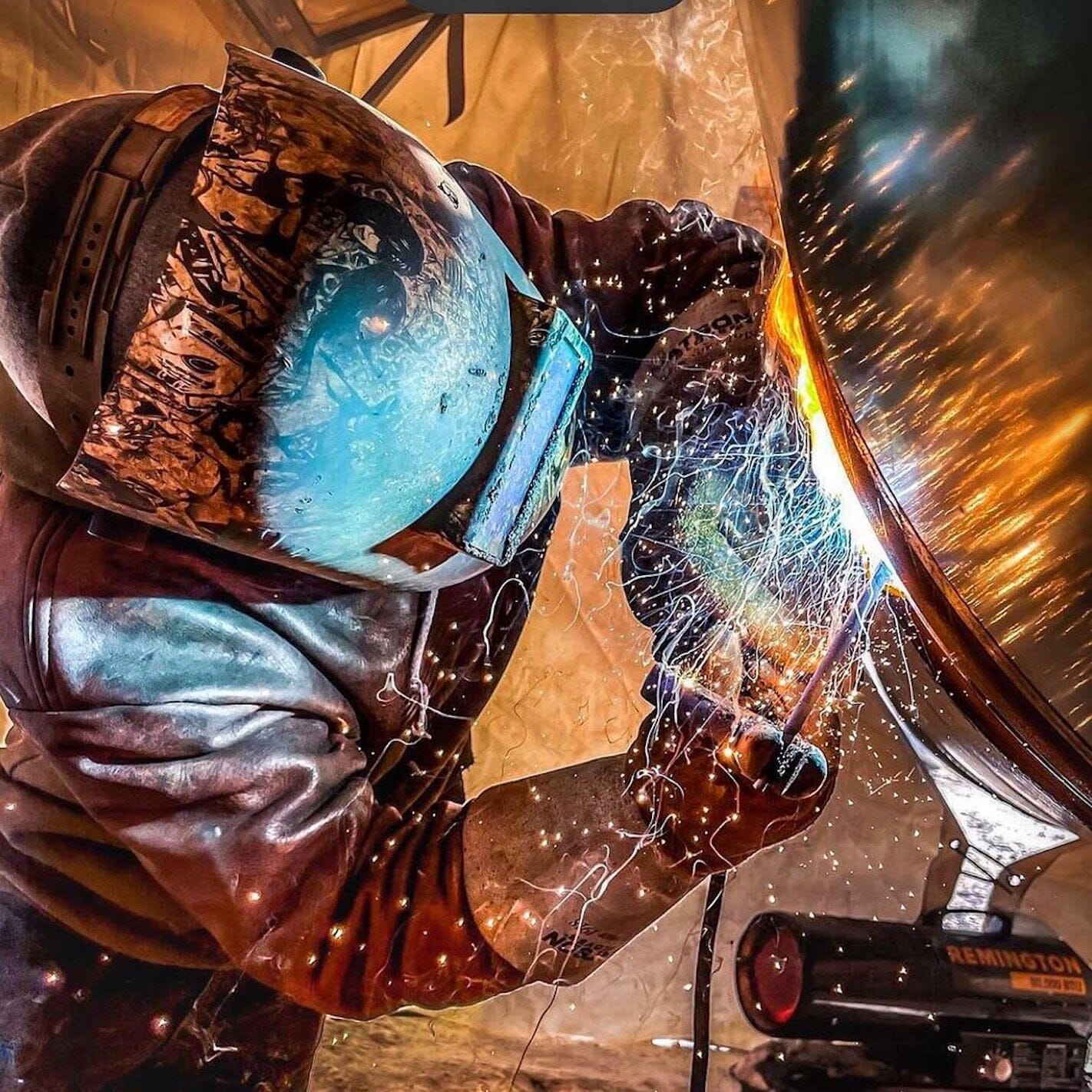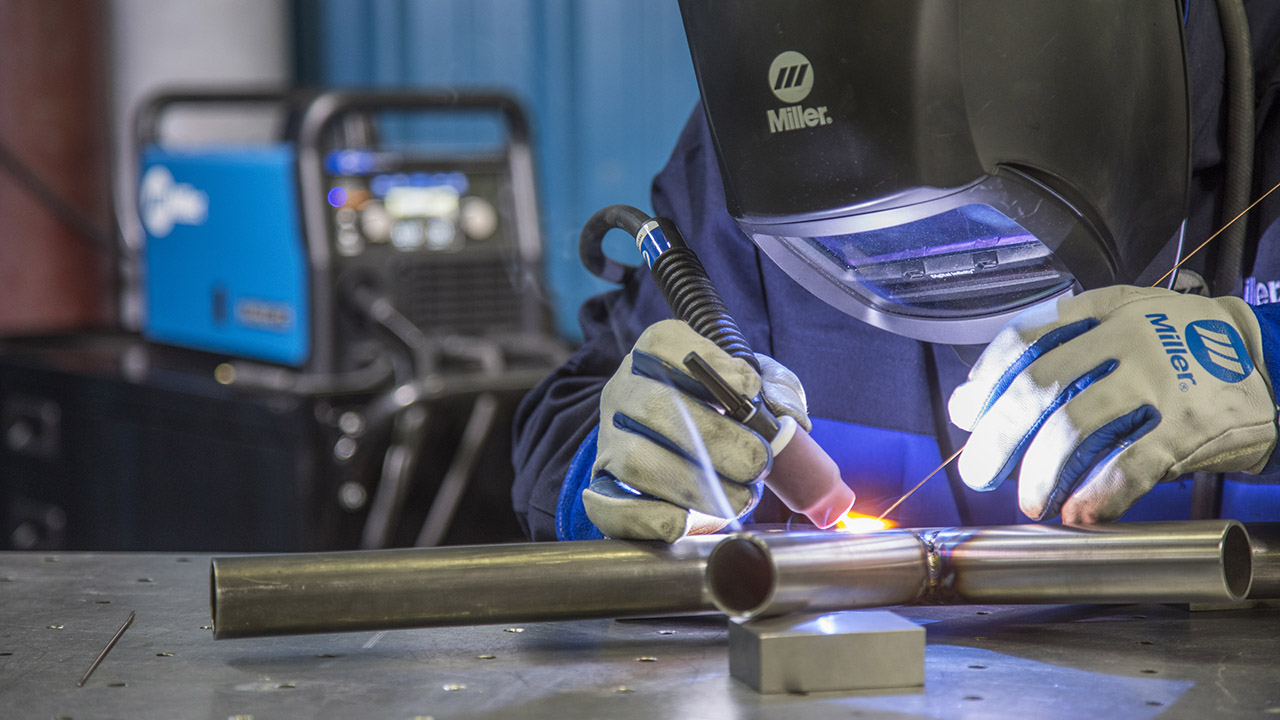Typical Welding Repair Work Issues and How to Address Them Effectively
Welding repairs often run into a variety of problems that can threaten the stability of the last product. Usual issues include poor penetration, porosity, and imbalance, to name a few. Each defect offers unique obstacles that call for particular methods for resolution. Understanding these problems is important for welders intending to improve their results and skills. This discussion will certainly discover these typical welding repair issues and reliable approaches to address them.
Insufficient Penetration
Insufficient penetration occurs when the weld metal falls short to totally fuse with the base material, causing weak joints and prospective architectural failings. This problem typically originates from not enough warm input, wrong electrode angle, or inappropriate welding speed. Welders might experience inadequate infiltration due to a miscalculation of the essential criteria for a particular product thickness or kind. In addition, contamination on the base material's surface area can hinder effective bonding, exacerbating the problem. To address insufficient penetration, welders ought to assure ideal setups on their devices and keep a tidy job surface area. Regular evaluation of welds is suggested to recognize any type of shortages early, enabling timely adjustments and the avoidance of jeopardized architectural stability in welded assemblies.
Porosity
Porosity is a typical problem in bonded joints that shows up as small gas bubbles caught within the weld steel. This flaw can endanger the integrity of the weld, causing lowered stamina and possible failure under tension. Montana Mobile Welding and Repair Fabrication. Porosity commonly emerges from contamination, wetness, or incorrect welding methods, which enable gases to leave right into the liquified weld pool. To attend to porosity, welders should guarantee appropriate surface area preparation, preserve a clean workplace, and use appropriate welding parameters. In addition, selecting the ideal filler product and securing gas can mitigate gas entrapment. Normal inspection and screening of welds can aid recognize porosity early, assuring timely rehabilitative actions are taken, therefore maintaining the high quality and dependability of the welded structure
Imbalance
Misalignment in welding can emerge from various factors, consisting of improper setup and thermal expansion. Recognizing the root creates is important for effective resolution. Several improvement techniques are readily available to realign parts and guarantee structural honesty.
Root causes of Misalignment
Welding misalignment commonly originates from a range of underlying problems that can compromise structural stability. One key reason is improper fit-up of elements before welding, which can bring about gaps and irregular surface areas. Variants in thermal expansion throughout the welding procedure can also lead to distortion, especially if the materials being joined have different coefficients of growth. Additionally, inadequate fixturing and clamping might stop working to hold elements safely in position, causing motion during welding. Inadequately kept equipment, including welding devices and tools, may present incongruities in the weld grain, more adding to imbalance. Lastly, driver mistake, stemming from inadequate training or experience, can additionally play a considerable function in producing misaligned welds.
Adjustment Strategies Available
Dealing with imbalance efficiently requires a combination of restorative techniques customized to the details issues available. One usual method is the usage of jigs or fixtures to hold components in the proper placement throughout welding, making certain consistent positioning. Furthermore, pre-heating the materials can help in reducing distortion and enhance fit-up. For considerable imbalance, mechanical realignment methods, such as using hydraulic jacks or clamps, can be employed to fix the placement before welding. Post-weld warmth therapy might likewise be essential to ease stresses brought on by misalignment. Mindful assessment and change during the arrangement phase can stop imbalance issues from coming to be substantial troubles, promoting a smoother welding procedure and improving total structural integrity.
Distortion
Distortion is a typical difficulty in welding that can develop from various aspects, including unequal cooling and heating. Comprehending the root causes of distortion is vital for executing efficient avoidance strategies. Addressing this problem not only improves structural stability however additionally boosts the overall high quality of the weld.
Root causes of Distortion
When subjected to the intense warm of welding, products usually go through adjustments that can cause distortion. This sensation primarily occurs from thermal development and contraction throughout the welding procedure. As the weld location heats up, the product broadens; upon air conditioning, it acquires, which can create interior anxieties. In enhancement, uneven heating throughout a work surface can worsen these tensions, causing warping or flexing. The sort of material also plays a substantial role; steels with varying thermal conductivity and coefficients of expansion may respond in a different way, bring about unpredictable distortions. Bad joint style and inadequate fixturing can contribute to misalignment during welding, enhancing the probability of distortion. Understanding these reasons is important for efficient welding fixing and prevention methods.
Prevention Techniques
Efficient prevention methods for distortion throughout welding concentrate on controlling warmth input and making certain proper joint design. Preserving a regular warm input helps to minimize thermal expansion and tightening, which can cause distortion. Utilizing methods such as pre-heating the workpiece can additionally decrease the temperature level gradient, promoting uniform heating. Furthermore, picking ideal joint designs, such as T-joints or lap joints, can enhance security and minimize stress and anxiety concentrations. Applying correct fixturing to secure the workpieces in place additionally help in maintaining positioning during the welding procedure. Finally, staggered welding series can distribute heat more evenly, preventing localized distortion. By applying these methods, welders can substantially decrease the likelihood of distortion and boost the general quality of their welds.
Cracking
Splitting is a typical problem run into in welding repair work, commonly resulting from numerous factors such as inappropriate cooling prices, material selection, or insufficient joint prep work. The occurrence of splits can significantly jeopardize the stability of the weld, resulting in possible failings during operation. To resolve this concern, welders must initially analyze the origin, ensuring that materials are suitable and suitably chosen for the details application. Additionally, regulating the cooling rate during the welding process is crucial; rapid cooling can generate anxiety and lead to splitting. Correct joint design and preparation also add to decreasing the threat. Carrying out these strategies can enhance weld check here top quality and toughness, inevitably decreasing the possibility of splitting in finished weldments.

Incomplete Combination
A considerable problem in welding repair work is insufficient blend, which occurs when the weld steel does not sufficiently bond with the base material or previous weld passes - Montana Mobile Welding and Repair Belgrade Welding. This problem can result in weak points in the joint, potentially jeopardizing the honesty of the welded framework. Variables adding to insufficient combination consist of inadequate warmth input, improper welding strategy, and contamination of the surface areas being signed up with. To address this issue effectively, welders must ensure proper pre-weld cleaning and surface prep work, along with readjust their welding parameters to attain adequate infiltration and fusion. Regular assessment throughout the welding procedure can additionally aid determine insufficient fusion early, permitting timely rehabilitative actions to boost the total high quality of the weld
Overheating
While welding repair services can boost architectural stability, overheating provides a considerable obstacle that can lead to product degradation. Excessive warmth throughout welding can modify the mechanical buildings of metals, resulting in reduced strength, raised brittleness, and warping. This sensation is particularly crucial in high-stress applications where structural integrity is critical. Recognizing getting too hot can involve visual evaluations for staining or distortion, in addition to monitoring temperature throughout the welding procedure. To minimize the risks connected with getting too hot, welders ought to utilize appropriate strategies, such as regulating heat input, readjusting travel speed, and utilizing suitable filler materials. Furthermore, executing pre- and post-weld warmth therapies can help bring back material residential or commercial properties and improve the overall high quality of the repair service, making sure long-term efficiency and safety.
Regularly Asked Questions
What Are the Usual Indicators of a Welding Issue?

Exactly How Can I Check My Welds for Top quality?
To test welds for top quality, one can make use of visual inspections, ultrasonic testing, and radiographic approaches. Each strategy guarantees structural honesty, determines flaws, and validates adherence to specified requirements, ultimately boosting the dependability of the bonded joints.
What Safety Safety Measures Should I Take While Welding?
When welding, one ought to prioritize security by wearing suitable individual safety equipment, guaranteeing correct air flow, securing flammable materials away, preserving a tidy office, and knowing environments to avoid injuries and mishaps.
Can I Fix a Weld Without Remodeling the Entire Joint?
Fixing a weld without redesigning the entire joint is possible, depending on the damage (Montana Mobile Welding and Repair Welding). Techniques such as grinding, adding filler product, or using a welding process can properly attend to details problems while maintaining the bordering structure
What Equipment Are Important for Reliable Welding Repairs?
Crucial devices for effective welding fixings consist of a welding device, wire brush, grinder, safety gear, clamps, and filler products. Each device plays an important role in guaranteeing high quality and safety and security throughout the repair service process. Porosity typically occurs from contamination, wetness, or incorrect welding methods, which allow gases to get away into the liquified weld pool. Poorly maintained tools, including welding equipments and tools, may introduce disparities in the weld bead, more adding to misalignment. When subjected to the extreme warmth of welding, products often go through modifications that can lead to distortion. Cracking is an usual problem encountered in welding repair work, frequently resulting from different aspects such as incorrect cooling prices, material option, or inadequate joint prep work. A significant concern in welding repairs is insufficient blend, which takes place when the weld metal does not sufficiently bond with the base product or previous weld passes.